
We take in about 23,000 breaths every single day, mostly without thinking about it. Personally I think that’s a good thing, because there’s already so much to focus on – cooking with wholesome ingredients, swapping out home products for non-toxic options, time with family, good sleep, and more.
However, a clean air check-in every once in awhile is well worth your time. According to the Environmental Protection Agency, the air in your home or office is likely to be 2-5 times (sometimes up to 100 times) more polluted than the air outside. (1)
Fortunately, little changes can make a big difference, and I’ll cover what you can do to easily improve indoor air quality in this article.
But first, what’s in the air anyway?
It took awhile for me to research and choose a high quality air purifier, so while I was waiting I researched and implemented several other strategies to improve indoor air quality.
Before we dive into them, though, let’s take a look at the pollutants they target.
- Flame retardant particles that have been linked to lowered IQ, developmental problems, cancer, reproductive problems and thyroid dysfunction.
- Volatile organic compounds (VOCs) that are linked to difficulties with focus, headaches, irritability, depression, dizziness, nausea, allergies, asthma, liver, kidney and central nervous system damage, some types of cancer, and irritation of the eyes, nose, throat, and skin.
- Dust, pollen and pet dander, which are all allergens that may exacerbate symptoms for people with asthma or seasonal/environmental allergies. Fyi, in one study, 39% of the dust particles in a home were actually microplastics, which are unlike anything our immune system has ever encountered. Here’s what we know about the health risks, plus seven ways to reduce your exposure.
- Mold and mildew, which can have a variety of health effects including breathing difficulties, fatigue, neurological and other problems.
- Bacteria and viruses – Our home have a microbiome just like our digestive tracts do. In my home, the goal is not to eliminate all microbes, but to discourage the overgrowth of ones that don’t work symbiotically for our benefit.

9 Ways To Improve Indoor Air Quality
If you want to dive deeper into what each one is, this post on choosing the best air purifier is a good place to start. Now, here are six budget-friendly ways to make your indoor environment healthier (plus a couple of options that are more of an investment).

1. Use A Doormat (Yep, it’s that simple)
According to an EPA report called The Doormat Study, lead-contaminated soil tracked into the home is the source of almost all the lead dust inside homes.
Removing shoes at the door reduced lead dust by 60 percent over a five month period, but using a doormat and then removing shoes at the door reduced indoor lead dust by 98.5%. (6)
Doormats may also help reduce the amount of pesticides and other contaminants tracked into the home.
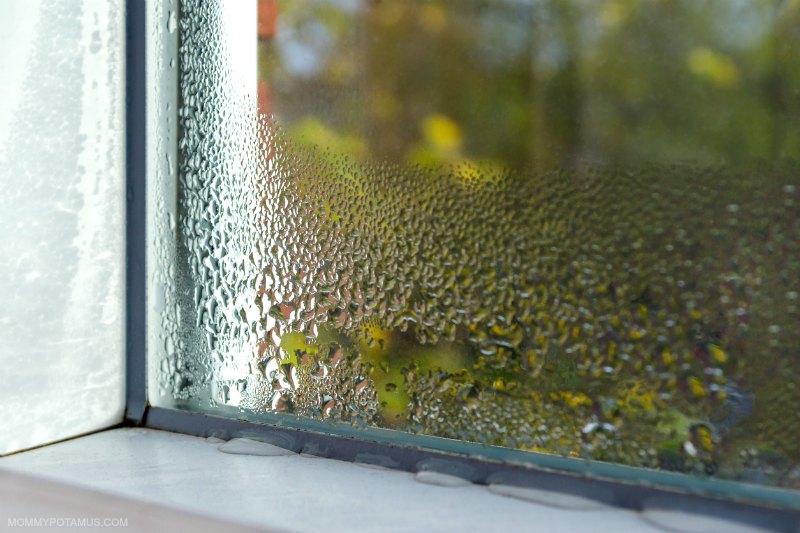
2. Manage Humidity Levels
Excess moisture is a breeding ground for bacterial, mold and mildew growth, while too little moisture can cause dry skin and mucous membranes (throat, nose, eyes,). The Environmental Protection Agency recommends keeping indoor humidity levels between 30 percent and 60 percent.
A friend of mine who is a functional medicine M.D. that specializes in mold toxicity suggests aiming for the 40% range with a max of 50%.
You can test indoor humidity levels using a humidity monitor called a hygrometer, which is highly accurate and easy to read. Make sure to pay close attention to areas that are likely to be more humid, such as bathrooms and the kitchen.
If humidity levels are over the recommended ranges, a dehumidifier can be helpful. Here are some of the top rated options:
- For small spaces – Pro Breeze Electric Mini Dehumidifier (up to 150 square feet) or Honati Home Dehumidifier (up to 260 square feet)
- Up to 1500 square feet – Midea Dehumidifier

3. Open Windows Often To Air Out Your Home
Leaky houses – or houses that exchange indoor air with outdoor air via openings around windows and doors, etc. – are bad for energy efficiency but good for air quality.
According to the Consumer Product Safety Commission, a house that is well-sealed “may have higher pollutant levels than other homes.”
If too little outdoor air enters a home, pollutants can accumulate to levels that can pose health and comfort problems. Unless they are built with special mechanical means of ventilation, homes that are designed and constructed to minimize the amount of outdoor air that can ‘leak’ into and out of the home may have higher pollutant levels than other homes. However, because some weather conditions can drastically reduce the amount of outdoor air that enters a home, pollutants can build up even in homes that are normally considered ‘leaky.'” (CPSC)
Fortunately, according to the EPA, one inexpensive way to improve indoor air quality is through natural ventilation – aka turning off the A/C and opening up the windows as often as possible. (EPA) It may also be helpful to turn on fans as well to help the indoor/outdoor air circulate better.
Here are a couple of things to keep in mind with this approach: If you’re sensitive to pollen it would be a good idea to wait until pollen counts are low, and if you live in a high-humidity area you will want to run a dehumidifier after you close the windows.
4. Use A HEPA Vacuum
Carpets can act like a sponge, absorbing mold, dust (including lead dust), flame retardants, dust mites and other contaminants. (7)
It’s important to clean them often, but according to environmental engineer John Roberts vacuuming “deposited more dust than it picked up so that over time carpets became a disgusting repository of toxic substances.”
Unlike sweeping and regular vacuums which stir the dust up into the air, a true HEPA vacuum uses powerful suction to capture and retain dust particles instead of spreading them. It doesn’t just reduce reduce flame retardant dust either – it also captures dust mites, mold spores, and pollen.
The same is thought to be true of hard floors – sweeping tends to stir up contaminants while using a HEPA vacuum captures it.
This HEPA vacuum was voted best budget pick by Prevention Magazine.
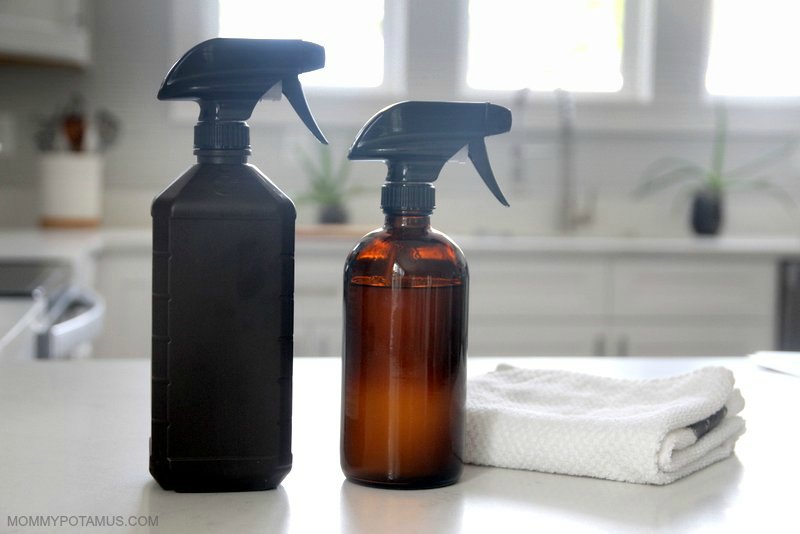
5. Swap Out Problematic Products
Cleaning Products & Air Fresheners – According to a new study, regular use of conventional cleaning sprays can have as much of a negative impact on health as smoking a pack of cigarettes a day.
That’s why one of the first steps to improving air quality is to switch over to non-toxic cleaning products. Also, use essential oil room sprays and simmer pots instead of artificially-fragranced air fresheners, and opt for homemade beeswax candles (or store-bought) instead of paraffin candles.
Furniture – Try to opt for pieces that aren’t sprayed with chemical flame retardants. Here’s a list of manufacturers that don’t use them. Some are expensive, but some are relatively inexpensive. Also, opt for solid wood furniture when possible.
If you have to buy new furniture that is likely to contain VOCs, let it off-gas outside for a little while before bringing it in if possible. Investing in a non-toxic mattress is another good way to improve indoor air quality since you spend about 1/3 of your life breathing the air right next to it.
When redecorating or remodeling– Choose green building materials whenever possible. I know from experience that this is not always realistic – when my husband and constructed a small building on our homestead a few years ago we didn’t have access to many green building materials, so we made sure to get a very good air filter to help soak up the VOCs after construction was complete.
Important note on remodeling: If your home was built before 1978, make sure to check for lead before starting a remodel.
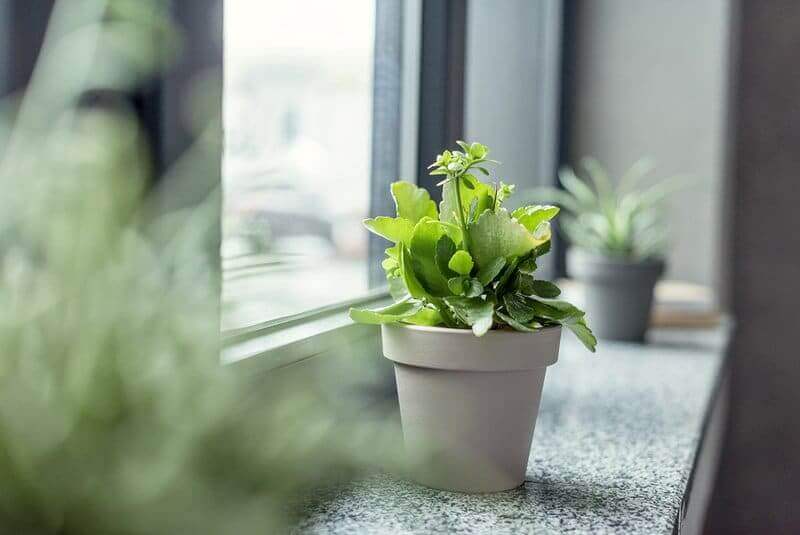
6. Incorporate Air Purifying Houseplants
A famous NASA experiment found that common indoor plants can improve indoor air quality by removing organic pollutants like volatile organic compounds (VOCs), which have been linked to a variety of health issues.
Critics of the NASA study say that the plants performed well under lab conditions, but may not deliver the same results in a home environment. Personally, I think they’re well worth incorporating for even a modest air purifying benefit, especially when you consider that indoor plants lower our mental and physical stress, and boost overall well-being, creativity, and productivity too.
Also, another study found that the soil microorganisms found in potted plants also remove VOCs.
Dr. Bill Wolverton, who conducted the original NASA study, wrote a book called How To Grow Fresh Air: 50 Houseplants That Purify Your Home Or Office. Here are some of the easier plants to grow that he recommends:
- Golden pothos (Epipremnum aureum)
- Spider Plant (Chlorophytum comosum)
- Snake Plant (Sansevieria trifasciata)
- Dwarf Date Palm (Phoenix roebelenii)
- Peace Lily (Spathiphyllum)
- English ivy (Hedera helix)

7. Bamboo Charcoal Bags
Since this post is about inexpensive options for air filtration I didn’t include air filtration units – however, they can make a huge difference and you can find a guide to choosing one here.
Moso bags are a budget friendly air purifying option that can help absorb odors and certain toxins in small spaces like cars, closets, bathrooms, gym bags and pet areas. They’re filled with activated charcoal, which is the same stuff that companies like Austin Air use in their top-rated air filters . According to Moso:
This incredibly powerful charcoal has millions of tiny little pores and cavities that work together to act like a big sponge. As air passes through the pores, odor, allergen and bacteria particles are trapped on the surface, which in turn purifies your air. Bamboo charcoal has been scientifically proven to reduce harmful chemicals including formaldehyde, ammonia, benzene and chloroform gases emitted from such items as paint, carpeting, air fresheners, chemical cleaners, rubber and plastic.
Unlike air purifiers that circulate air in large rooms – using a fan to draw it through a filter and then redistributing it back into the room – Moso bags rely on passive absorption of nearby contaminants. That’s why they work best in small spaces – because they only impact air that is close by. They’ve worked well for me in closets, and customers rave about them on Amazon:
This is my first ever review. I was NOT given this for free or discount or offered anything at all for this review. I had a gallon of milk spill in my car and living in a very hot climate, well you can imagine the stench. I have tried everything but nothing worked. My kids refused to drive with me. So then I bought this Moso purifying bag and the smell has disappeared overnight. Can’t explain it. Not sure how it works. Buy it…trust me….
Each bag lasts about two years (it needs to be set out in the sun every month or so to keep it working), and after that you can cut the charcoal out of the bag and use it in your garden. Here’s where to buy them.
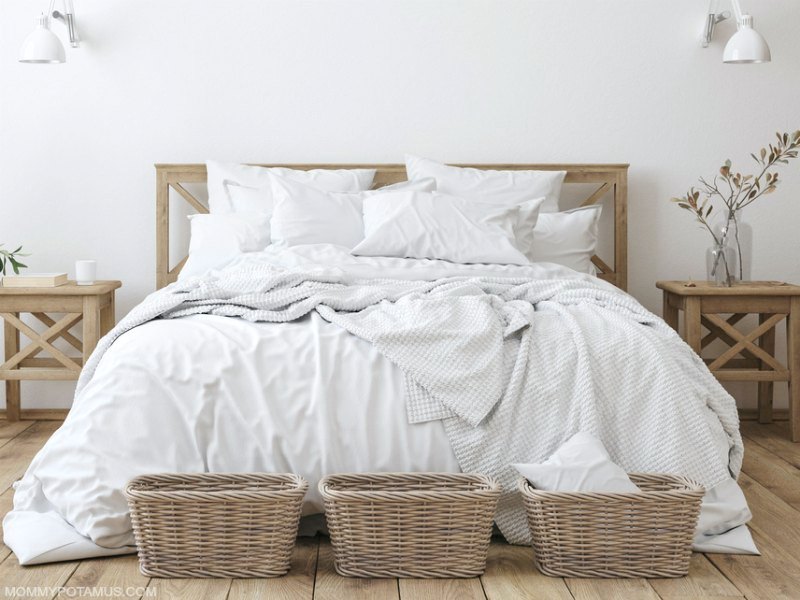
8. Wash Your Sheets Weekly
We’ve already touched on how dust mites negatively impact air quality, but we haven’t actually covered what they are and why. Dust mites are microscopic bugs that are closely related to spiders and ticks. They don’t bite people, but they do eat skin cells that people shed and they love warm, moist environments.
Their effect on air quality has do to with the droppings and body fragments they leave behind. (Ewww.)
One of the best ways to reduce dust mites is to wash sheets, pillowcases, blankets and bedcovers in hot water (130F or higher) once a week to kill dust mites and remove the allergens they shed.
If you can’t wash a particular item but you can put it in a hot dryer (130F or higher) for at least 15-20 minutes it will kill the mites. Washing is better because it removes the allergens they’ve already deposited, but the dryer will at least inhibit them from making more if done frequently.
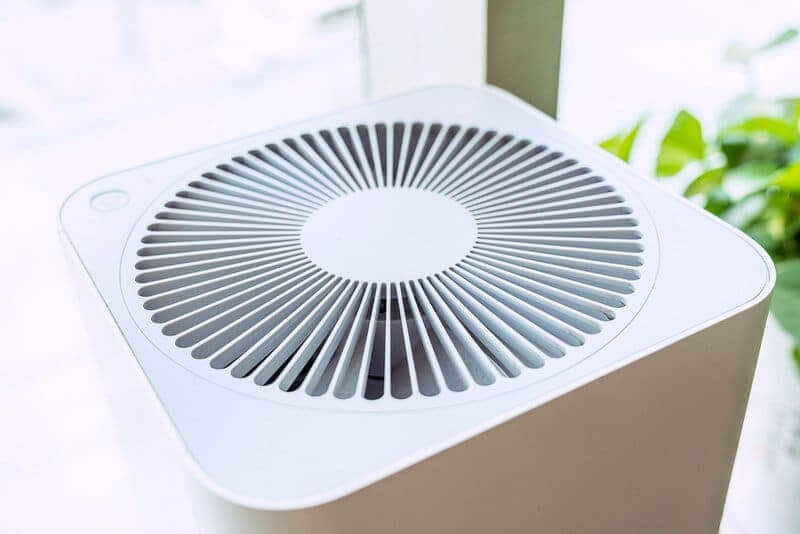
9. Invest In A Good Air Filter
Last but definitely not least, a good quality air filter can make a huge difference in indoor air quality. I’ve put together a guide that explains the pros and cons of different purifying options such as HEPA filtration, activated carbon, ionic filtration and more, plus my top air filter picks – you can find it here.
Other Things You Can Do
Test for radon– Radon is a colorless, odorless radioactive gas that’s produced by decaying uranium in the soil. It’s not considered a concern outside because it is diluted by so much fresh air, but when it makes its way into homes it can build up in higher concentrations.
Because the air pressure in homes is usually slightly lower than the pressure outside, the gas can be sucked up into homes through cracks in the foundation or walls if radon is nearby.
Fortunately, if a radon issue is found (using one of these test kits or the help of a professional), the problem can be resolved by improving ventilation.
Install a carbon monoxide detector – According to the EPA, “A variety of items in your home such as unvented kerosene and gas space heaters, leaking chimneys and furnaces, and gas stoves” can release odorless carbon monoxide in the home.
In addition to servicing equipment to make sure it’s in good working order, it’s also a good idea to install a carbon monoxide detector to monitor for any problems that may arise.
Want non-toxic cleaning recipes that WORK?
I’ve created a free ebook for you as a gift for signing up for my newsletter. 7 Non-Toxic Cleaning Recipes That Really Work covers seven recipes that you can make in just a few minutes each for squeaky clean windows, sparkling dinnerware, lemon-fresh countertops, and more. Subscribe to my newsletter below and you’ll be redirected to a download page for immediate access to this PDF ebook.
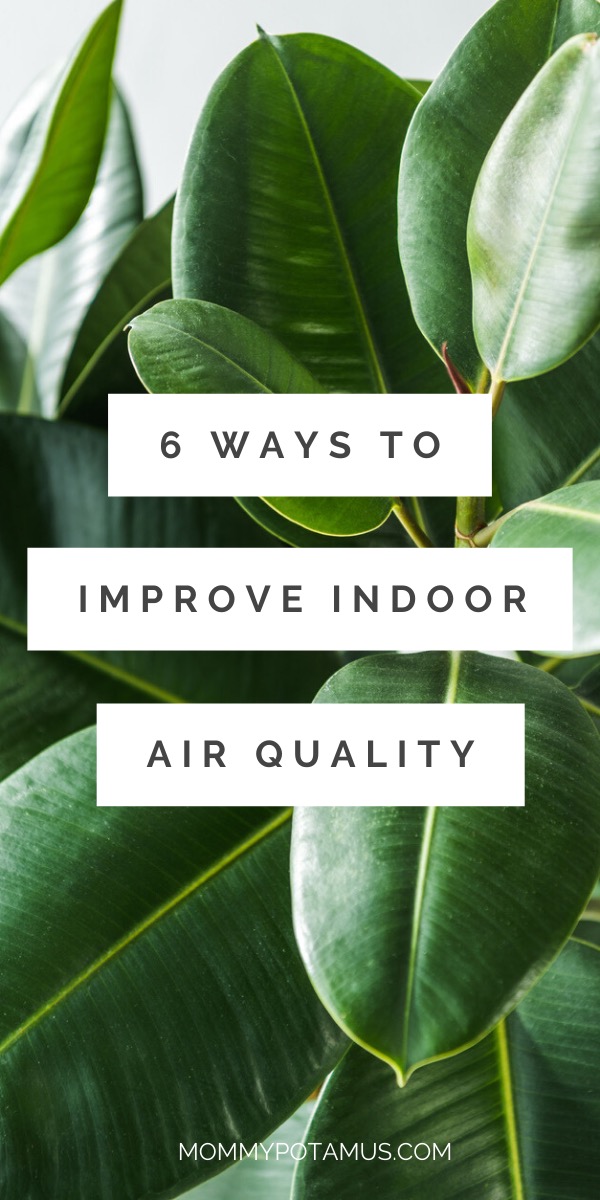
Sources For This Article
1. Environmental Protection Agency. Improving Indoor Air Quality
2. Adgent, Margaret et. al. (2014) Brominated Flame Retardants in Breast Milk and Behavioral and Cognitive Development at 36 Months
3. Callahan, Patricia and Roe, Sam (2012) Fear fans flames for chemical makers
4. Joshi, Sumedha (2008) The sick building syndrome
5. American Lung Association. Dust Mites
6. Environmental Protection Agency. Reducing lead exposure from remodeling and soil track-in in older home
7. Uhlig, Robert. (2001, May) Carpets are piled high with toxic pollutants.
8. Consumer Product Safety Commission. The Inside Story: A Guide to Indoor Air Quality

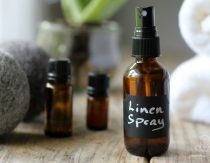


Hello Heather, I do not see the link mentioned for flame retardent free furniture manufacturers. Could you please post it? Thanks so much. Love your posts.
So sorry about that! I’ll update the post now. While I’m working on that, here’s the link: https://www.ceh.org/residential-furniture/
You said: “If your home was built before 1978, make sure to check for lead before starting a remodel.”
Why is that? Ours is. We plan on doing a big remodel—should we not be or is there something we can do to help?
Lead paint was banned in 1978 – before that it was commonly used and can be distributed in the air via dust during the remodeling process.
There is no link for the furniture that doesn’t contain flame retardants. Hoping you can fix this 🙂
Many thanks.
Sorry about that! Here it is: https://www.ceh.org/residential-furniture/
This link takes you to CEH website but I don’t see anything regarding furniture. Can you help? Thanks!
Indoor air quality has become a huge problem. Since our indoor air is almost five times more contaminated the the outdoors, it is important to schedule for air quality testing. If you suspect a specific pollutant, start with that before testing for other pollutants
have been trying to buy all these plants and propagate the ones I’ve paid for when my yard is covered in English ivy!! Time to bring it indoors :))
Wow! I had no idea that Homebiotics was a thing! I will definately look into that, thank you. My hubby suffers from allergies. I run a high-end air purifier in my basement (the likely source of many allergies, since the AC unit pulls in basement air to circulate). That has not helped… maybe this will. Thank you!
Right now the highest level VOCS come from your scented laundry products. Made with synthetic fragrances that contain toxic chemicals: phthalates, hormone disrupters, formaldehyde, etc. When heated at high temperatures in dryer, the chemicals become extremely volatile, leaving you exposed to toxins. Inhaling them and absorbing them through the bloodstream are ways in which they damage health. Always choose plant based laundry products.
Hi Heather – Thanks for all the tips! We have a big problem. We moved into new construction four years ago and my already bad health took a major turn (really, really stupid of us). The house is still outgassing and it is still making me sick. The biggest problem is we can’t open our windows because the neighbor on one side uses really stinky fabric softener and the neighbor on the other smokes cigars. We have tried to talk to them but no use. The houses are really close together so the fumes come in easily. On top of that, we live in Gilroy and the garlic smell is really strong and bothers me, we have new construction all around us and we have skunks that love to spray in our area. So frustrating! We are trying to move but having a hard time. Any advice? I have been trying so many things since we moved in. We have two Air Doctors and two Austin airs, one of each on each floor. We have plants. We change sheets regularly. We are a solidly organic and natural family other than the stupid house. We’ve tried most of your tips. I am at the end of my ideas. Anything else we can try? Thanks!
Unfortunately, most indoor plants for toxin removal are unsafe for pets.